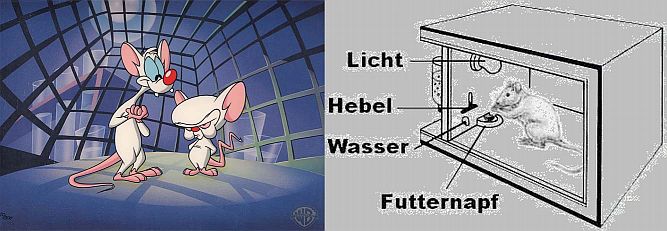
Skinner did not believe in hypothesis testing and the creation of theories due to his empirically based system of radical behaviorism. He did, however, believe that psychology should be a science of behavior without reference to internal states. Skinner did, however, come up with an important law based off his operant conditioning studies with rats; the law of acquisition which was an observation that the frequency of an operant behavior was increased when it was followed by the presentation of a reinforcing stimulus. Skinner's operant conditioning, although similar to classical conditioning, deserves some explanation since it was allowed him to derive his law of acquisition. Operant conditioning dealt with the effect that consequences would have on behavior. There were two consequences with negative and positive forms, according to Burger (2004):
The experiment which provided Skinner with his law of acquisition was an operant conditioning experiment in which a rat deprived of food was placed in a box that eliminated external stimuli with food attached to an apparatus connected to a lever. The rat was allowed to explore the box and would eventually "discover" that pushing the lever would cause the apparatus to dispense food pellets.The food pellets were therefore the reinforcement (positive) and pressing the lever was the operant behavior.Skinner's derived the law of acqusition based off of the following two laws his work on rats with food pellets as a reinforcing stimulus revealed:
Skinner discovered that positive reinforcement, due to the desire of the organism to obtain rewards, was the most effective method for increasing desired operant behavior. Extinction, removal of the food pellets, lead the rat to decrease and eventually cease its' operant behavior due to the lack of reward. If positive reinforcement was provided intermittently along with extinction it would lead to increased resistance to the extinction effect. Punishment, on the other hand, is usually not as effective because it has three limitations according to Burger (2004):